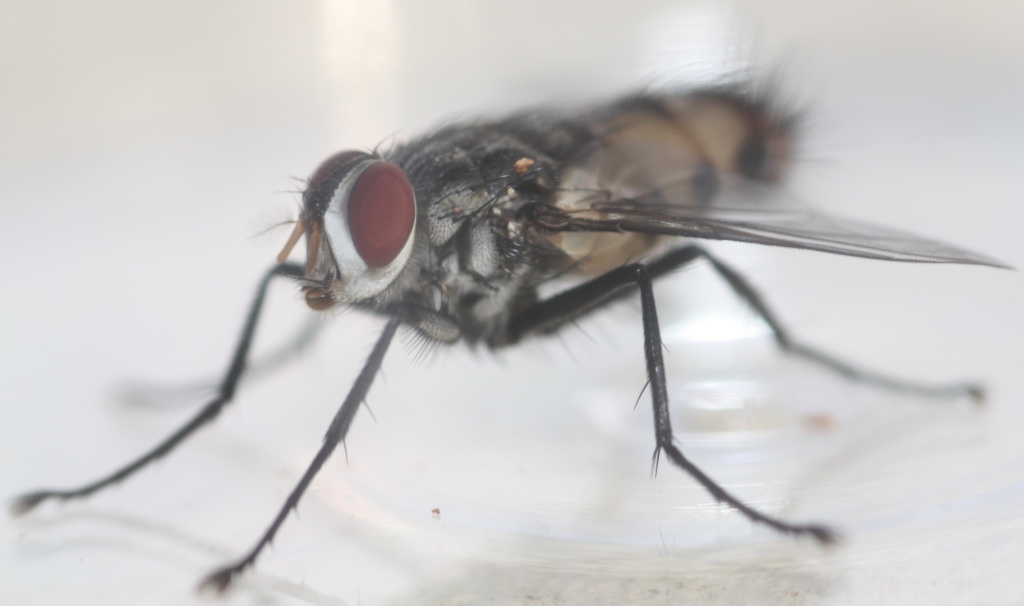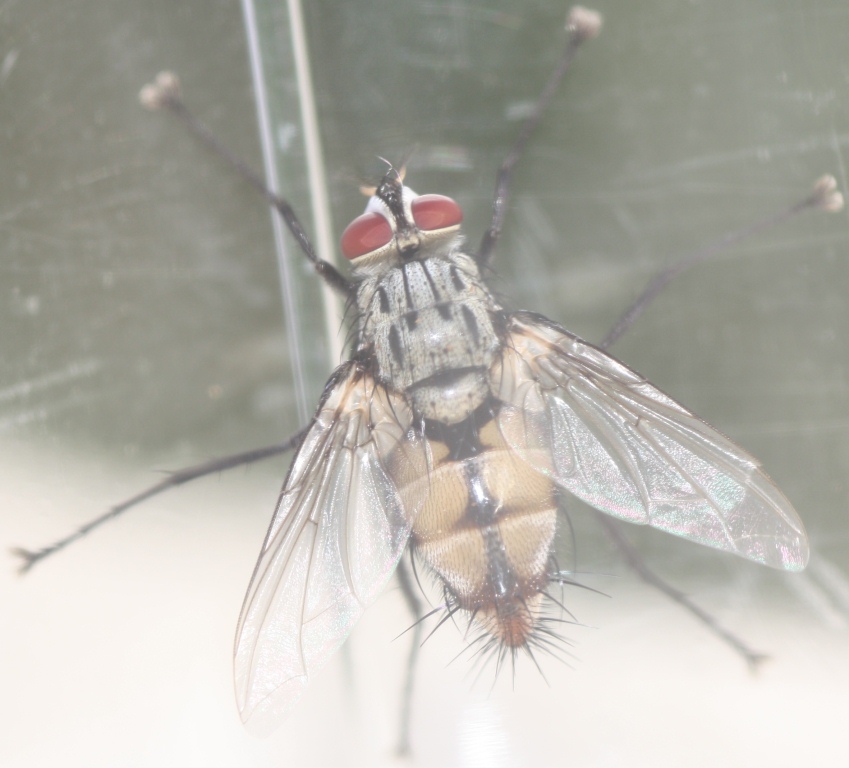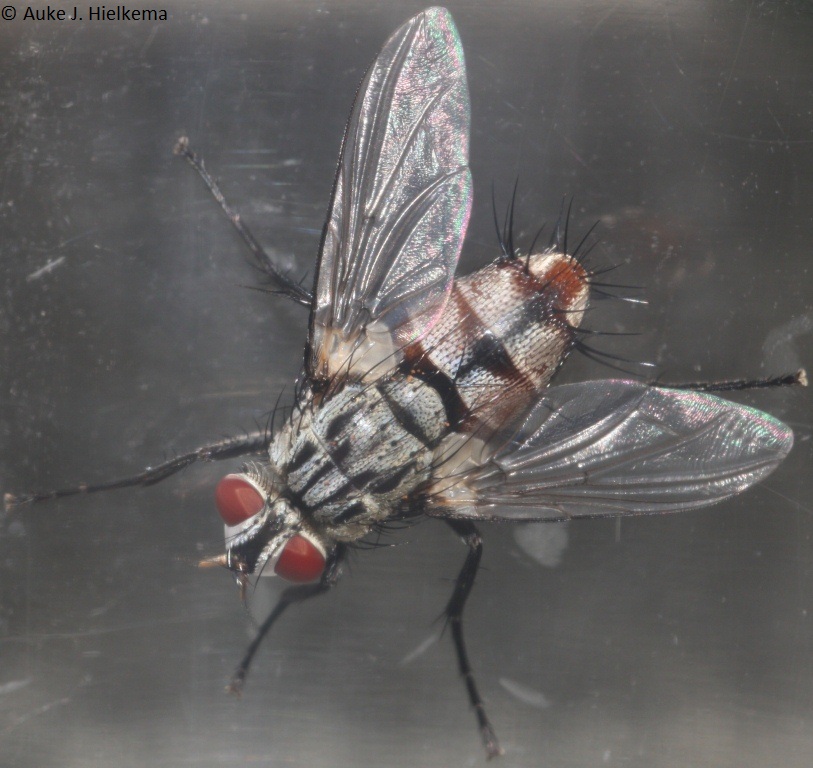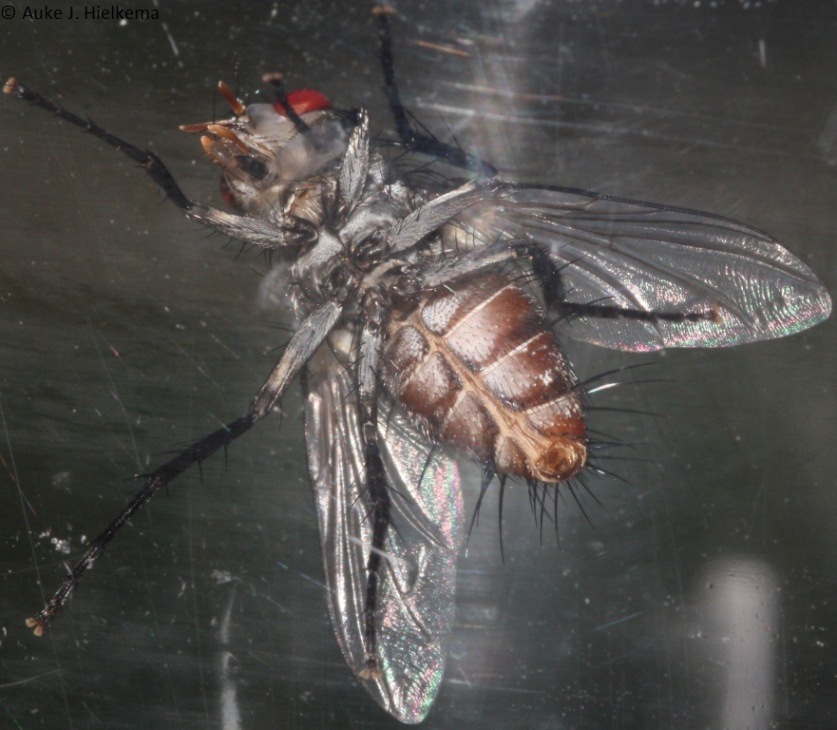Diptera.info :: Identification queries :: Diptera (adults)
|
Surinamese parasitic Tachinidae, Dexiinae: Zelia. How to kill and preserve?
|
|
| Auke |
Posted on 06-04-2013 19:39
|
|
Member Location: Suriname (South America) Posts: 312 Joined: 21.10.12 |
At the moment I'm breeding several species of scarab beetle here in Suriname. In two jars, each containg a single larva (wild catch) of a small scarab species, I've found a dead fly. These flies were apparently dead for a couple of days (I don't check daily, that's not necessary with scarabs) and completely fell apart when I removed them. Today, I found that these flies were actually parasiting the scarab larva. I've now also found a fly pupa which is still closed. Once the fly emerges, I would like to preserve it because of its connection with the scarabs. Since I have no experience with killing and preserving flies (except for with the fly squatter), I would like to ask you how to do this best. From what I could make of the remains of the dead flies, they are probably rather small (5mm body lenght?) with relatively long legs. I'll send them to the Netherlands for further study, but how to kill and how to preserve without damaging them? I have no insect pins here. Thanks in advance, Scarabaeoid Edited by Auke on 23-04-2013 22:42 |
| Paul Beuk |
Posted on 06-04-2013 20:04
|
|
Super Administrator Location: Netherlands Posts: 19403 Joined: 11.05.04 |
Small bottle, cheapest booze avialable (preferable 40% + alcohol and colourless) and you are in business. If need arises to send specimens I can always send you some small vials for that purpose.
Paul - - - - Paul Beuk on https://diptera.info |
| Auke |
Posted on 06-04-2013 23:18
|
|
Member Location: Suriname (South America) Posts: 312 Joined: 21.10.12 |
I got 70% and 95% alcohol at hand for preservation purposes, and I got small glass vials as well. Is this good or should I use another percentage alcohol? Do I kill them by drowning in the alcohol or is it better to use ethylacetate for the actual killing? I also got acetone when needed. Should I use some kind of plug in the vial (apart from the rubber cork on top) to prevent movent during transportation? Thank you, Scarabaeoid |
| Paul Beuk |
Posted on 07-04-2013 09:35
|
|
Super Administrator Location: Netherlands Posts: 19403 Joined: 11.05.04 |
Pop them in the 70% and that's it. If there is enough fluid (little air) in the vial there is little chance of damage. Otherwise use a piece of cottonwool but fragile specimens may get tangles and break when the get stuck in it and are removed for study.
Paul - - - - Paul Beuk on https://diptera.info |
| Nosferatumyia |
Posted on 07-04-2013 11:54
|
|
Member Location: Posts: 3545 Joined: 28.12.07 |
Guys, most probably they are my pyrgotids. Any host data and material are welcome, perhaps via John Smit (Leiden) or Paul Beuk. Val |
|
|
|
| Auke |
Posted on 07-04-2013 13:46
|
|
Member Location: Suriname (South America) Posts: 312 Joined: 21.10.12 |
Thank you both! I just checked the Wikipedia page on Pyrgotidae, but either they are no Pyrgotidae or untypical Pyrgotidae. The maggots live of larvae (one maggot per larva) and these scarabs are diurnal. If/when the fly hatches I'll try to make some photos so that at least the family can be identified. Scarabaeoid |
| sd |
Posted on 08-04-2013 19:05
|
|
Member Location: Suffolk, UK Posts: 893 Joined: 11.10.07 |
Hi, Have a look at Dexiinae, subfamily of Tachinidae. These match your host and the long legs  If so, Chris Raper may be able to help. If so, Chris Raper may be able to help.Steve |
|
|
|
| Auke |
Posted on 08-04-2013 21:36
|
|
Member Location: Suriname (South America) Posts: 312 Joined: 21.10.12 |
Thank you sd! Life history and shape seem to match what I know about my flies. Now let's hope the sole pupa I got left (unless another larva is infected) turns into a nice fly, so we can say something for sure. Scarabaeoid |
| Auke |
Posted on 18-04-2013 23:02
|
|
Member Location: Suriname (South America) Posts: 312 Joined: 21.10.12 |
The pupa has hatched and I got a nice fly. Indeed some Dexiinae it seems. Any thoughts on a further ID? And what would be the best angles to make more photos before I kill it? I'm thinking about writing some article about it, and some nice photos wouldn't hurt. To prevent his/her escape I've taken the photos through the glass of a small plastic jar (which is a bit scratched, unfortunately). Indeed some Dexiinae it seems. Any thoughts on a further ID? And what would be the best angles to make more photos before I kill it? I'm thinking about writing some article about it, and some nice photos wouldn't hurt. To prevent his/her escape I've taken the photos through the glass of a small plastic jar (which is a bit scratched, unfortunately).To keep it alive for a while I've given it a folded moist piece of toilet paper containg a drop of honey on the inside. Any better ways of feeding it would be appreciated, I don't even know if it will like honey. Thanks in advance, Scarabaeoid Auke attached the following image:  [126.7Kb] |
| Auke |
Posted on 18-04-2013 23:03
|
|
Member Location: Suriname (South America) Posts: 312 Joined: 21.10.12 |
Second photo.
Auke attached the following image:  [168.01Kb] |
| ChrisR |
Posted on 23-04-2013 08:26
|
|
Super Administrator Location: Reading, England Posts: 7706 Joined: 12.07.04 |
Very nice  I would guess that these are from the genus Zelia - a common genus across South America with many undescribed species and no keys available to identify them I would guess that these are from the genus Zelia - a common genus across South America with many undescribed species and no keys available to identify them  The best thing to do is to lodge them (with host data) with me or Monty Wood and at the very minimum we will make them available to workers that want to take on the genus and revise it.  I have loads of specimens of Zelia spp. here waiting for a key to become available. The BMNH collection hasn't been much help either because a large proportion of their specimens are awaiting description/identification. It is important to preserve the host remains or at least the identification of the host because this might be critical in helping to sort out the taxonomy. Edited by ChrisR on 23-04-2013 08:27 Manager of the UK Species Inventory in the Angela Marmont Centre for UK Biodiversity at the Natural History Museum, London. |
| Auke |
Posted on 23-04-2013 22:42
|
|
Member Location: Suriname (South America) Posts: 312 Joined: 21.10.12 |
@ ChrisR: Thank you for your reply and ID! Judging by your words, Zelia seems to be a genuine headache genus. Host data shouldn't be a problem. I'm likely to have some males (needed for ID) and the genus is relatively small and with a key. Yesterday I killed the fly in alcohol after it managed to get one wing damaged (top missing). This afternoon, I found another pupa, so I'm waiting for that one to hatch as well. Could you tell by the photo's if the fly is a male or female? And where to look for the difference? Best regards, Scarabaeoid |
| Auke |
Posted on 26-04-2013 19:24
|
|
Member Location: Suriname (South America) Posts: 312 Joined: 21.10.12 |
Number two hatched today. I made a couple of photos before giving it swimming lessons in the alcohol. Anybody able to tell me if these flies are male or female? And where to look for the difference? Scarabaeoid Auke attached the following image:  [181.12Kb] |
| Auke |
Posted on 26-04-2013 19:26
|
|
Member Location: Suriname (South America) Posts: 312 Joined: 21.10.12 |
And a ventral shot. Thanks for helping me, Scarabaeoid Auke attached the following image:  [164.1Kb] |
| Auke |
Posted on 28-04-2013 17:26
|
|
Member Location: Suriname (South America) Posts: 312 Joined: 21.10.12 |
Headshot on request.
Auke attached the following image:  [113.42Kb] |
| Jump to Forum: |













